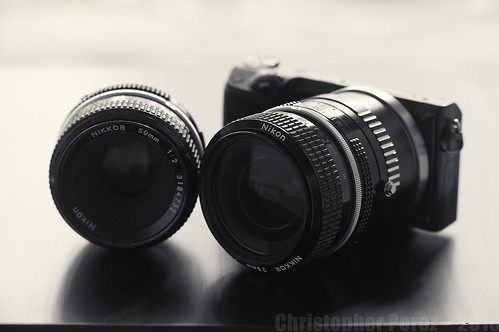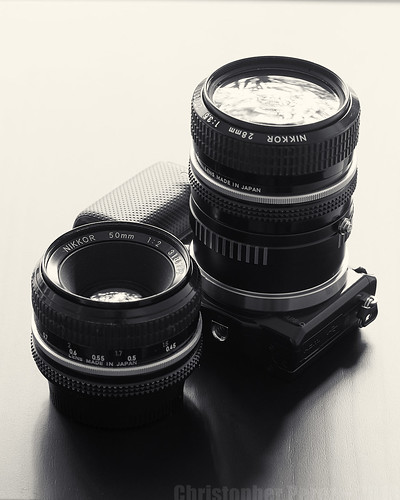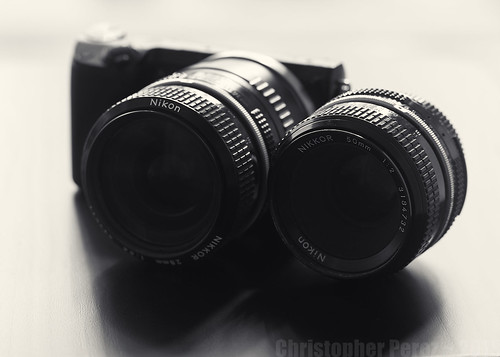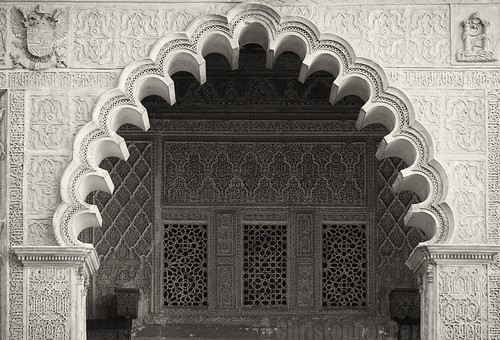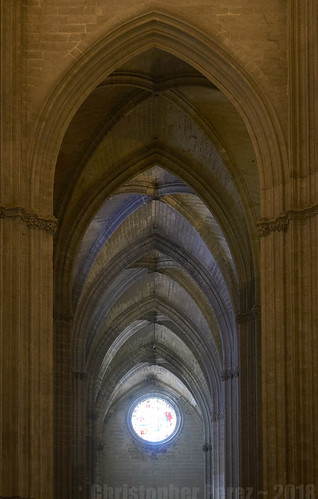Just yesterday my wife and I were at Darty looking at a couple things for the apartment. Naturally I was curious to see what they had on hand by way of cameras. Well, for 250Euro they have a Sony A5000 + 16-50mm kit lens. What a screaming deal.
I have an A5000 body with the 20mpixel sensor and it's my "go to" camera for so many situations. It's very light and compact and images really "pop", almost like a "Goldielocks" camera. Just right. Or almost.
If you know anything about Europe you'll know that the sun loves to play "cache-cache" for three quarters of the year. This means that much of the time the A5000 and NEX-5T work just fine when mated to a few old Nikkors. I can clearly see the screen when making focusing decisions.

Sony A5000 +
Lens Turbo II focal reducer +
Nikon Nikkor 50mm f/2 Ai
Come summer and the sun makes a full throated roaring appearance. There are a lot of vintage automobile events that I like to attend and, well, focusing can be difficult when using old manual focus optics.
In addition to the A5000 (just one, thank you very much) and the NEX-5T (of which I am now rich in three examples, heaven help me!) I also have an A6000 body with the fabulous 24mpixel sensor. After shooting mostly Nikon Nikkor manual focus lenses for the past year, I came to realize I like the rangefinder EVF for making precise focusing decisions when shooting in full summer sun.
To get to a setup that works well for me I needed to customize the A6000's button functions. Among the normal customizations needed to shoot manual focus lenses on the A6000 I made the big button in the center of the wheel on the back of the camera enlarge the scene when I tap it two or three times. Now I can be using the EVF, tap the big button, focus, lightly tap the shutter release get out of the magnifier mode and to return to full scene mode, compose and trigger the shutter. Simple, actually. My description sounds worse than it really in practice is.
What tickles the funny bone is that all of my cameras are small, light, and rather inexpensive. My AF lenses (Sigma and Sony) are small, light, and inexpensive. The Nikon Nikkors that I have probably too many of are quite sharp and quite inexpensive these days.
There are two adapters that I use to mount the Nikkors on the Sony APS-C mirrorless cameras. One is an inexpensive adapter that multiplies the effective focal length of a lens by 1.5x. For instance, a lens marked 50mm will be cropped to an effective focal length of 75mm when shot on an APS-C sensor camera.
The second adapter I use is a Lens Turbo II focal reducer. This adapter includes optics that shrink the coverage of a full frame 35mm lens to fit the APS-C format. The effective field of view, therefore, remains unchanged. For example, a 50mm f/2 lens becomes a 33mm f/1.2 on APS-C and gives the exact same field of view and depth of field as when the 50mm lens is used on full frame 35mm cameras.
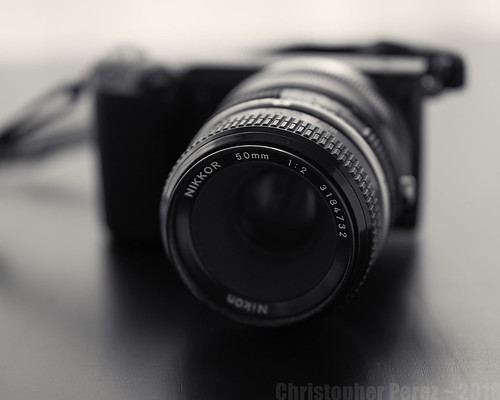
Sony A5000 - paid 225Euro
Lens Turbo II focal reducer - paid 120Euro
Nikon Nikkor 50mm f/2 Ai - paid 7Euro (yes, seven Euro)
Looking around at the current state of imaging technologies makes me realize that I'm carrying a lot of equipment and making complex decisions just to take a picture. None of this includes a currently fashionable One Does Everything mobile phone (Samsung, Apple, or Google). How quickly I've once again become a luddite. Such are the wages of being retired and living on a fixed income.
I wrote a little about how strange it feels to once again be surrounded by changing imaging technologies and to continue to work from the back end of the technology wave. A friend commented that, effectively, what does it matter the equipment as long as one creates beauty?
And that's a good goal, isn't it? Creating beauty.
OK. Onward.
I have an A5000 body with the 20mpixel sensor and it's my "go to" camera for so many situations. It's very light and compact and images really "pop", almost like a "Goldielocks" camera. Just right. Or almost.
If you know anything about Europe you'll know that the sun loves to play "cache-cache" for three quarters of the year. This means that much of the time the A5000 and NEX-5T work just fine when mated to a few old Nikkors. I can clearly see the screen when making focusing decisions.

In addition to the A5000 (just one, thank you very much) and the NEX-5T (of which I am now rich in three examples, heaven help me!) I also have an A6000 body with the fabulous 24mpixel sensor. After shooting mostly Nikon Nikkor manual focus lenses for the past year, I came to realize I like the rangefinder EVF for making precise focusing decisions when shooting in full summer sun.
To get to a setup that works well for me I needed to customize the A6000's button functions. Among the normal customizations needed to shoot manual focus lenses on the A6000 I made the big button in the center of the wheel on the back of the camera enlarge the scene when I tap it two or three times. Now I can be using the EVF, tap the big button, focus, lightly tap the shutter release get out of the magnifier mode and to return to full scene mode, compose and trigger the shutter. Simple, actually. My description sounds worse than it really in practice is.
What tickles the funny bone is that all of my cameras are small, light, and rather inexpensive. My AF lenses (Sigma and Sony) are small, light, and inexpensive. The Nikon Nikkors that I have probably too many of are quite sharp and quite inexpensive these days.
There are two adapters that I use to mount the Nikkors on the Sony APS-C mirrorless cameras. One is an inexpensive adapter that multiplies the effective focal length of a lens by 1.5x. For instance, a lens marked 50mm will be cropped to an effective focal length of 75mm when shot on an APS-C sensor camera.
The second adapter I use is a Lens Turbo II focal reducer. This adapter includes optics that shrink the coverage of a full frame 35mm lens to fit the APS-C format. The effective field of view, therefore, remains unchanged. For example, a 50mm f/2 lens becomes a 33mm f/1.2 on APS-C and gives the exact same field of view and depth of field as when the 50mm lens is used on full frame 35mm cameras.

I wrote a little about how strange it feels to once again be surrounded by changing imaging technologies and to continue to work from the back end of the technology wave. A friend commented that, effectively, what does it matter the equipment as long as one creates beauty?
And that's a good goal, isn't it? Creating beauty.
OK. Onward.
